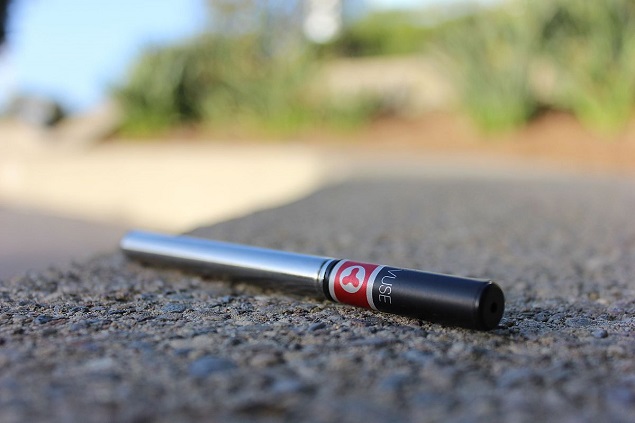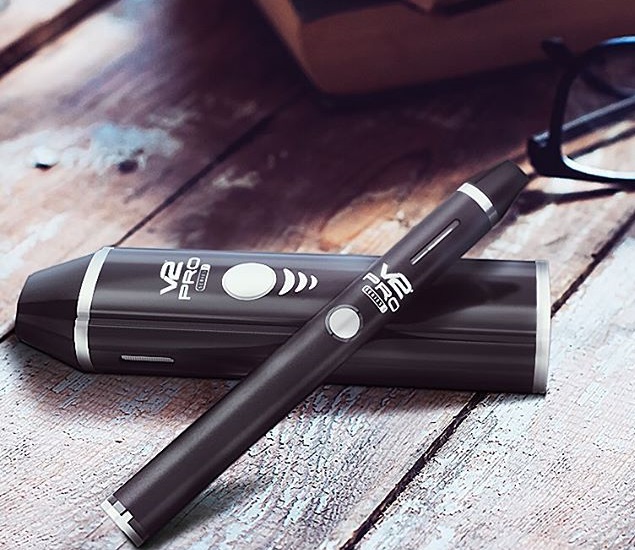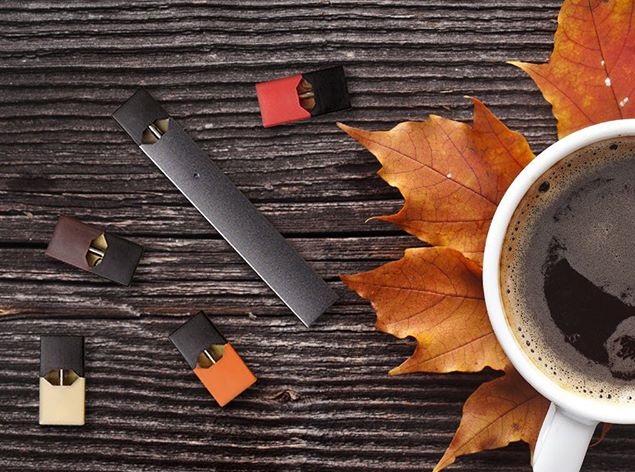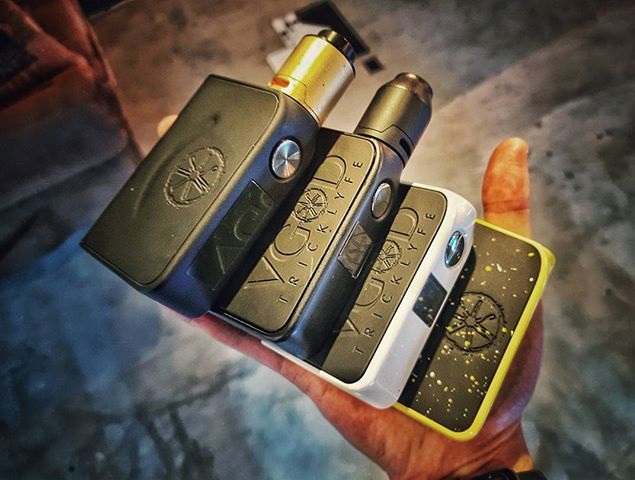Stepping into the vaping world can be both intimidating and confusing. Part of the reason is the (undeserving) bad press vaping is getting lately. However, the bigger problem is definitely the fact that there’s just so much information out there. Terminology, different types of products, different styles of vaping – very few write-ups are beginner-friendly so dipping your toe in such a vast sea can seem frightening. The simple truth is that wondering what and how to vape shouldn’t hold you back from trying it. There are a lot of good plug-and-play vaping products out there and if you’re looking for convenience and ease of use, you will find both easily.
To help you get started, I’ve put together this simple and not-at-all-intimidating (but seriously!) guide to vaping, which answers some basic questions:
- What is vaping? Simple – it’s an act of inhaling vapor produced by different types of vaporizers. These can be portable and desktop and can vaporize different materials.
- What do I need to get started with vaping? You need a vaporizer that works with your vaping material. Today, I’ll give you the lowdown on e-cigs and vape juices.
- Errm, vape juice and nicotine? Yep, you will probably need both to vape, unless you’re not a smoker trying to quit. Both nicotine and nicotine-free juices are readily available.
- How to vape like a pro? Believe it or not, most of the time you just press the fire button on your e-cig and inhale. In some cases, even pressing a button is unnecessary.
- Is vape gear cleaning & maintenance tricky? Not at all. Of course, you will need to regularly clean your vape gear but that usually involves warm water and a quick rinse.
What is Vaping?
Essentially, vaping means inhaling the vapor produced by a vaporizer. Vapor is an air-suspended substance that is created when a liquid or a solid is turned into a gas. Vaping vapor can be created from a variety of vape materials – vape juices, dry herbs, concentrates, or wax. Vapor is easy to confuse with smoke but it’s generally thicker, smells better, and dissipates quickly.
In this guide, I will be focused on discussing e-juice vaping – it’s what you’re here for, after all. Most people tend to associate the word ‘vaping’ with that, although, as I’ve mentioned there are other vape materials out there – not the kind you would take home to your mother to try but they are there, nonetheless.
What Do You Need to Start Vaping?
All you need to start vaping is a vapor delivery system (a vape device, vape mod, e-cig or a vape pen – depending on what you subscribe to) and some vape juice. This vape device can be as simple or as complex as you want it to be.
All vape devices boil down to two essential components:
- The battery – delivers the power you need to vaporize the e-juice and turn it into vapor. It can be internal (built-in) or external (a device that takes one, two, or even three 18560 – mostly lithium-ion – batteries).
- The tank (or a cartridge) – holds the heating element (atomizer) and vape juice and connects to the battery. There are different kinds of tanks – refillable, disposable, tanks with pre-made heating elements, tanks that require a bit of vaping know-how, and so on.
Of course, as a beginner vaper, you want to start out with something really simple and work your way up from there. Your options are:
Cigalikes – these small devices that look like cigarettes were the first to hit the market over a decade ago. They are either disposable or rechargeable, with a small battery and a cartridge containing some vape juice. They don’t have a fire button and are activated by inhaling on the tip. There are still good cigalike brands out there, although I would encourage beginner vapers to start with something a bit more sophisticated.

Vape Pens – vape pens are larger than cigalikes and resemble fountain pens (at least, the first ones did). They have an internal battery with decent life and can come with disposable, pre-filled tanks, and tanks that can be disassembled, cleaned, and refilled with a vape juice of your choice. I usually recommend beginner vapers start with this type of set-up.

Pod Systems – pod systems (or pod mods) are essentially pens that use pre-filled pods instead of tanks. Choosing a pod system device means you will be replacing pods on a regular basis – you can only use the pods manufactured by the same company that created the pod system (for example, JUUL vaporizer), which means that you will have a limited selection of vape juice flavors.

Mods & Tanks – mods are ‘modified’ vaping devices. The term is used to describe the battery portion, which is usually box-shaped and bigger than vape pens because it needs to accommodate a larger battery and an electronic circuit (which allows you to regulate wattage delivered to your atomizer). Tanks can be similar to those on vape pens but will generally be bigger, refillable, and have airflow control (for cloud customization), as well as replaceable atomizers. Some even allow you to build your own atomizers (using different wires for coils) and are called rebuildable atomizers.

AIO Systems – AIO stands for all-in-one, which means that the battery and the tank are integrated and cannot be taken apart. AIO’s pretty much function as any mod and tank but are smaller and more portable. They are great for beginners because they are easy to use and require little to no maintenance. A prime example of a really beginner-friendly AIO device is the JoyeTech Ego AIO.

Vape Juice & Nicotine Demystified
Vape juice is the sweet nectar that vapers crave. Still, there’s nothing mystical about it – it’s made from several easily obtainable components: Propylene Glycol (PG), Vegetable Glycerin (VG), various flavorings, and nicotine. Don’t worry – you will be buying ready-made juice, not making your own.
Both PG and VG are suspension liquids that hold the flavorings and nicotine. They carry the aroma and create vapor. PG is odorless, transparent and really good at carrying flavors. On the other hand, VG is slightly sweet (which can affect vape juice taste) but creates a lot more vapor than PG. Most vape juices are a blend of VG and PG in different ratios (cloud chasers tend to prefer high VG concentrations).
Different flavorings are used to create different vape juice aromas. Flavorings can be natural, artificial, or organic but all are food-grade and completely safe for consumption.
As for nicotine, it’s optional but most smokers who are switching to vaping will want to have a healthy dollop of it in their vape juices. You can have your pick of nicotine level: 3mg, 6mg, 9mg, and all the way up to 24mg (reserved for really heavy smokers).
How to Vape?
Turn on your vaping device (pressing the fire button five times will usually do the trick) and do a preliminary check. Make sure that the battery is full, the device is properly assembled, and that there’s vape juice in the tank.
If possible, adjust the power – most new devices will allow you to set firing wattage, either with a twist knob at the bottom of the vape pen or via a small OLED display on the battery. Start with a lower setting (20 to 30 watts) and work your way up.
Now, simply move the mouthpiece (the top of the tank) to your mouth, press and hold the fire button and inhale. Take shorter puffs at first until you get used to the sensation.
Inhaling vapor is different than inhaling smoke. There’s a good chance that you will start coughing. Don’t worry about it – it happens to the best of us. Your throat is not yet accustomed to VG and PG but it will get there in time.
There are two techniques you can use for inhaling vapor; mouth-to-lung (M2L) and direct-to-lung (D2L). Both are common but your choice will depend on your vaping style and preferences.
- Mouth-to-lung vaping – the process of filling your mouth with vapor before inhaling it into your lungs. M2L is similar to smoking and new vapers tend to prefer it, at least in the beginning. This type of inhale will require lower wattages and restricted airflow.
- Direct-to-lung vaping – inhaling the vapor directly into your lungs. It’s similar to using a bong because the vapor doesn’t get a pit stop in the mouth. D2L creates bigger clouds but you will need to have a tank with good airflow and vape on higher wattages.
Cleaning & Maintenance
It’s important to keep your vape device (especially the tank) clean. A good rule of thumb is to clean it every time you switch to a different vape juice or at least once a week. The battery part will just need a good wipe down and you will need to check whether there’s any vape juice on the connector.
As for the tank, regular cleaning is done with warm water. Remember to remove your atomizer (coil) before cleaning your tank, otherwise, you won’t be able to use it until the cotton inside it is completely dry. In case you need to give your tank a thorough clean (or remove odor from a previous vape juice) you can try washing it in a solution of water and vinegar, alcohol, or baking soda. If you want it done quickly and without being hands-on, simply invest in an ultrasonic cleaner and all your problems will be ‘washed’ away!
Vaping is Really Easy – Now That You Know How
That’s right, vaping is easy. It’s even easier when you have a nifty little guide to tell you how it’s done. I’m sure you would figure it all out eventually but consider this write-up a leg up – a helping hand that will easily usher you into the world of vaping by answering all your beginner questions.
Do you have any other questions on how to vape properly? If you’re still confused, leave a comment and I’ll be more than happy to answer any and all questions you might have!

